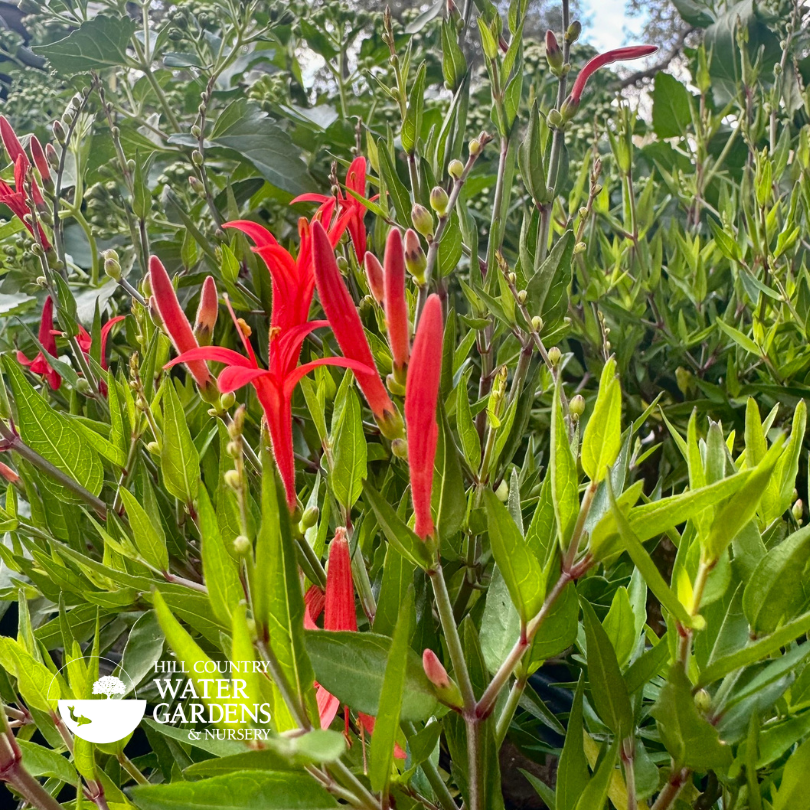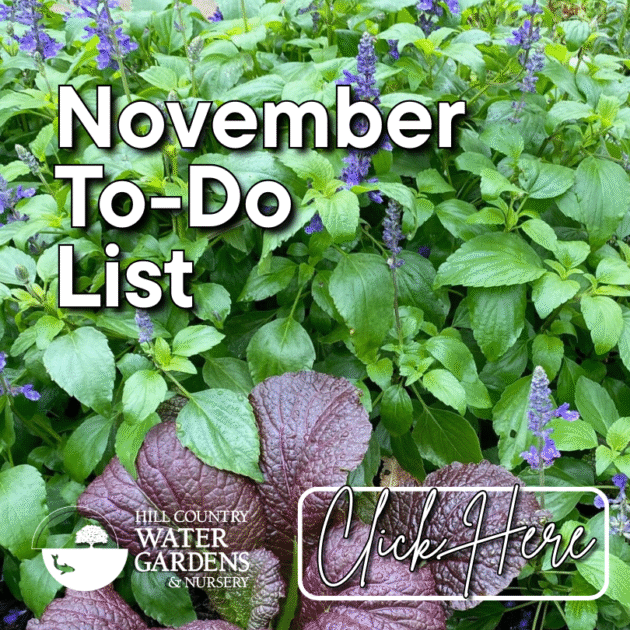November 13, 2025

Above: Native Anisacanthus quadrifidus - Flame Acanthus in bloom in our nursery.
Originally published in our October 23rd, 2025 Newsletter.
Why IS Fall the BEST Time to Plant?
In Texas and across the American South, fall planting is the best way to ensure the success of your investments. Folks up north probably do it differently. We're really not sure.
Heat!
Plants "drink" more as our air temperatures climb. The reverse is also true; plants will "drink" less in cooler weather. Planting now will allow the plants to establish new roots during three seasons of cooler weather. There will be less demand on the roots to provide the needed water and nutrients.
Drought!
Again, our rainy season(s) are typically Fall, Winter, and Spring. Again, this will give the new transplants up to nine months of help to establish their root systems! Often, these seasons can surprise us with droughts, but (see #1) the cooler temps will lessen the demand for water and nutrients! And! Supplemental irrigation is far less likely to quickly evaporate like it can in a warm Spring and Summer.
Warm Soil!
The majority of the plants utilized in landscapes enjoy warm soil to spread their roots into. After a nice, warm summer, the soil is perfect for root growth. In the Spring, the opposite is true. We wait for the soil to warm up for many of our landscape plants.
Less work and worry!
The first year after transplanting can be touch-and-go, especially when planting mid to late Spring or early Summer when our temps can become hellish. One missed watering in an extra-hot July can spell disaster. We see this almost every day. Fall planting makes life so much easier on the home /land owner, and one missed watering (if it's even needed) can usually be shrugged off with little if any damage to the new planting!
What you CAN plant now: EVERYTHING!
Trees, shrubs, grasses, perennials, xeric species like cold-hard cactus, Agaves, Yuccas, and False Yuccas, cool-season annuals, roses, and more!
What you should not plant now:
Warm-season annuals, warm-season vegetables (unless you have a greenhouse), and Tropical Plants.


You must be logged in to post a comment.